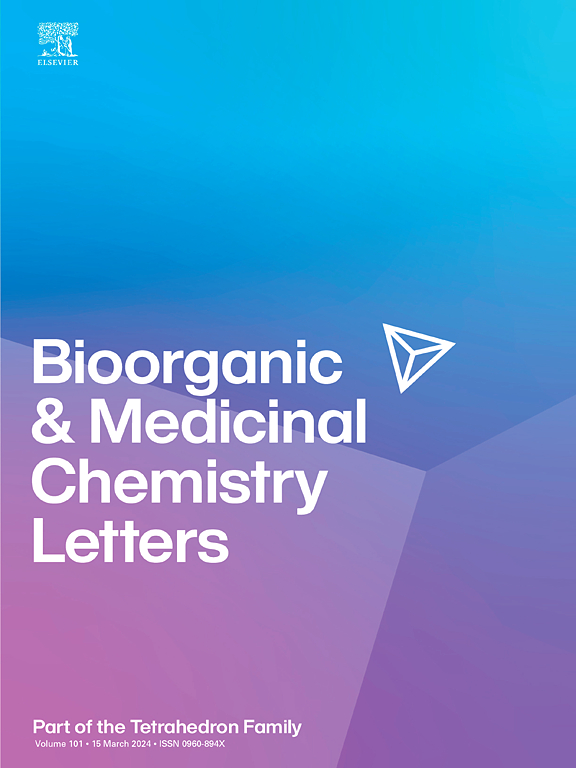Design, synthesis, molecular docking and ADME of novel phenylalanine derivatives as mushroom tyrosinase inhibitors
IF 2.5
4区 医学
Q3 CHEMISTRY, MEDICINAL
引用次数: 0
Abstract
Tyrosinase is the key rate-limiting enzyme for melanin synthesis. The accumulation and excessive production of melanin lead to skin pigmentation. Therefore, tyrosinase is the target of tyrosinase inhibitors to control melanin synthesis. Only a few TYR inhibitors have been proven to be effective and safe to treat skin pigmentation. This highlights the importance of developing new tyrosinase inhibitors. Based on the reported tyrosinase inhibitors with phenylalanine structure, a series of novel phenylalanine derivatives were synthesized and investigated as mTYR inhibitors. The results demonstrated that most of these derivatives had more potent mTYR inhibitory activities than positive controls. Compound 3e was found to be the strongest inhibitor with an IC50 value of 4.86 ± 0.026 μM. The Lineweaver-Burk plots of mTYR inhibition kinetics revealed that the selected compounds 2d and 3e were reversible and competitive inhibitors. In addition, molecular docking results of compounds 2d and 3e show they could compete with the substrate for the active center, including mTYR and hTYR. And the ADME prediction of selected derivatives assess the potential druglikeness. These results indicated that this class of compounds could be used as leads for developing new TYR inhibitors.

新型苯丙氨酸衍生物蘑菇酪氨酸酶抑制剂的设计、合成、分子对接和ADME
酪氨酸酶是黑色素合成的关键限速酶。黑色素的积累和过量产生导致皮肤色素沉着。因此,酪氨酸酶是酪氨酸酶抑制剂控制黑色素合成的靶点。只有少数TYR抑制剂已被证明是有效和安全的治疗皮肤色素沉着。这突出了开发新的酪氨酸酶抑制剂的重要性。在已有的苯丙氨酸结构酪氨酸酶抑制剂的基础上,合成了一系列新的苯丙氨酸衍生物作为mTYR抑制剂。结果表明,与阳性对照相比,大多数衍生物具有更强的mTYR抑制活性。化合物3e是最强的抑制剂,IC50值为4.86±0.026 μM。Lineweaver-Burk图显示,所选化合物2d和3e是可逆的竞争性抑制剂。此外,化合物2d和3e的分子对接结果表明,它们可以与底物竞争活性中心,包括mTYR和hTYR。并对所选衍生物的ADME进行预测,评估其潜在的药物相似性。这些结果表明,这类化合物可以作为开发新的TYR抑制剂的先导物。
本文章由计算机程序翻译,如有差异,请以英文原文为准。
求助全文
约1分钟内获得全文
求助全文
来源期刊
CiteScore
5.70
自引率
3.70%
发文量
463
审稿时长
27 days
期刊介绍:
Bioorganic & Medicinal Chemistry Letters presents preliminary experimental or theoretical research results of outstanding significance and timeliness on all aspects of science at the interface of chemistry and biology and on major advances in drug design and development. The journal publishes articles in the form of communications reporting experimental or theoretical results of special interest, and strives to provide maximum dissemination to a large, international audience.

 求助内容:
求助内容: 应助结果提醒方式:
应助结果提醒方式:


